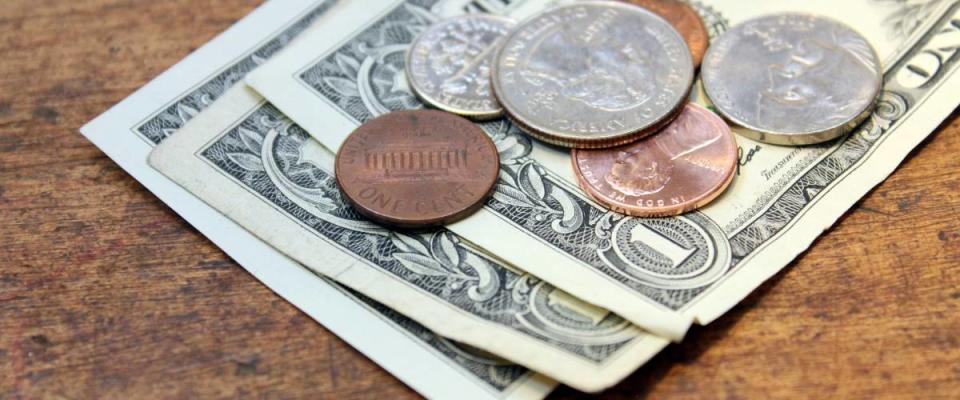Only a couple of child tax credit payments to go. Is this really the end?

Millions of families are rejoicing as the IRS sends out the fourth round of souped-up child tax credit payments. But without action from Congress, the jubilation won’t last much longer.
After October’s deposit, only two more advanced payments remain. And that’s not what struggling families want to hear.
In fact, a new poll says one in three Americans feel the expanded payments shouldn’t just stick around for a while longer — they should be made permanent.
For now, it’s unclear whether the program will survive the end of the year, let alone forever. Families counting on more financial support would be wise to start preparing by making a few moves of their own.
A short-lived lifeline

This past week, the IRS sent more than $15 billion to the families of about 61 million children, thanks to enhancements found in President Joe Biden’s COVID rescue package.
The boosted child tax credit (CTC) gives families up to $3,000 per child aged 6 to 17 and $3,600 per kid under 6. Families are currently receiving half the credit in monthly instalments — up to $300 — until the end of the year and can claim the rest in tax refunds next year.
Four months in, the program has built a loyal fan base. Half of the nearly 2,000 people surveyed in a Politico/Morning Consult poll earlier this month approve of the expanded payments. Only 38% oppose, and the remaining 11% have no opinion.
Stimulus checks and tax credits have helped keep many Americans fed, housed and healthy despite the mass layoffs early in the pandemic and soaring inflation. Some 38% of households suffered serious financial problems this year, according to a study released this month by NPR, the Robert Wood Johnson Foundation and the Harvard T.H. Chan School of Public Health.
Keep in mind, that’s how many families are struggling even though two-thirds are receiving financial assistance from the government, the study says.
Without an extension, next year’s CTC will revert to $2,000 for each child 17 and under. It will also stop being distributed via advanced payments and lose a number of provisions that ensured more money got into the hands of the nation’s poorest.
Build Back Better plan starts to crack

A quick search online will pull up numerous petitions with thousands of signatures asking Congress to preserve the expanded CTC. More than 80,400 people have signed a petition sponsored by several advocacy groups on ActionNet.org.
Top Democrats want to make the expansion permanent, too, including House Speaker Nancy Pelosi, Treasury Secretary Janet Yellen and the president himself.
For the moment, President Biden is aiming to extend the current tax credit through 2024 or 2025 as part of his “Build Back Better” agenda.
But both sides of the House and Senate have been skeptical of the $3.5 trillion price tag attached to the next stage of his plan — and Biden now admits that the bill cannot succeed in its current form.
“I’m convinced we’re going to get this done,” Biden said Friday at a childcare center in Hartford, Connecticut. “We’re not going to get $3.5 trillion. We’ll get less than that. But we’re going to get it and we’re going to come back and get the rest.”
As lawmakers look to pare down the cost of the bill, it’s possible the enhanced CTC could get the ax instead of other big-ticket measures, like the expansion of Medicare to include dental, vision and hearing services.
So what should you do?

You don’t have to leave your financial fate in the hands of Congress.
Here are just a few examples of the kinds of moves you can make right now to give your family more financial security.
Slash your mortgage payments. If you haven’t refinanced into one of today’s historically low mortgage rates, time could be running out. The Federal Reserve may start hiking interest rates as early as next year. For now, mortgage technology and data provider Black Knight says 13.9 million homeowners could save an average $293 a month with a refi.
Deal with your debt. It’s hard to get ahead if you’re stuck with high-interest debt, like the kind on credit cards. Consider paying off those balances with a single, low-interest debt-consolidation loan. That will leave you just one bill to deal with and potentially free you from debt years sooner.
Improve your credit score. With a mortgage refi or debt-consolidation loan can save you serious cash, you won’t be able to access the best rates if your credit isn’t in tip-top shape. Check your credit score for free online and take some basic steps to improve it.
Lower your insurance costs. You might be paying hundreds of dollars too much for car insurance every year if you haven't looked around for a better rate lately. A little comparison shopping could help you find a much cheaper policy. And you can use the same strategy when the time comes to renew or buy homeowners insurance.
Turn pennies into a portfolio. Even if you don't have much money, you can still earn returns from today’s hot stock market. A popular app will help you invest your “spare change” from everyday purchases in a diversified portfolio.
This article provides information only and should not be construed as advice. It is provided without warranty of any kind.

 Yahoo Finance
Yahoo Finance 